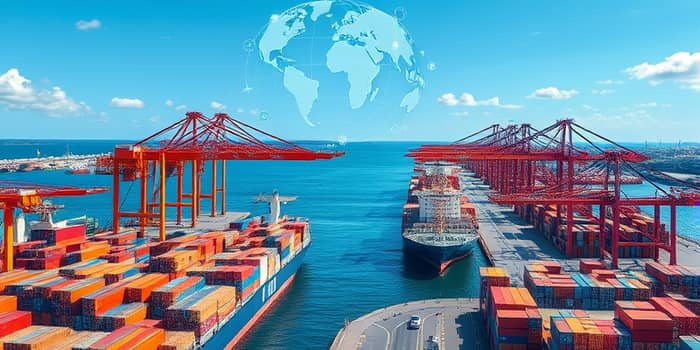
In the wake of unprecedented supply chain turbulence, global shipping costs are finally stabilizing as ports around the world relieve their bottlenecks. Businesses and consumers alike stand to gain from this renewed equilibrium.
After years of strain, the logistics industry is witnessing a pivotal shift. Shipping rates that once soared to record highs are cooling, and congestion metrics are trending downward.
Between 2020 and 2022, ports experienced dramatic fluctuations in global freight rates. Skyrocketing demand, pandemic disruptions, and labor shortages combined to choke off maritime capacity.
As ships queued offshore, demurrage fees accumulated and cargo delays rippled through every link of the supply chain. By mid-2021, the Shanghai Containerized Freight Index (SCFI) exceeded $5,000, more than three times its pre-pandemic baseline.
From 2023 onward, a coordinated push on infrastructure and management began to clear the backlog:
As congestion eased, available vessel capacity rebounded. Freed from extended waiting times, carriers started filling sailings more reliably. This resurgence in supply has driven rates back toward sustainable levels.
Still, regional discrepancies persist. Trans-Pacific 40ft containers now average $3,800–$4,500—above the $2,500 pre-pandemic norm. Red Sea disruptions have propelled South Asia–Europe rates up by 70%, while Africa routes have seen a 14% decline as local demand stabilized.
Facing lingering volatility, many companies are adapting to this new normal:
These approaches not only smooth out cost fluctuations but also enhance overall supply chain visibility and agility.
Despite current improvements, the maritime sector remains exposed to external pressures. A surge in new vessels may create overcapacity and potential rate volatility if global trade growth fails to keep pace.
Additional factors to watch include:
Carriers may respond with blank sailings or idled ships, exerting upward pressure on rates once again. Conversely, sustained demand growth could absorb new capacity and maintain downward momentum in prices.
Ultimately, the path forward will hinge on the balance between supply growth and trade expansion. Stakeholders who invest in technology, diversify their logistics mix, and foster collaborative partnerships will be best positioned to thrive.
With port congestion largely alleviated, the industry stands at a crossroads. The lessons learned during this period of upheaval have spurred innovation and resilience. By remaining vigilant and adaptable, shippers and carriers can secure the benefits of lower costs and smoother operations well into the future.
References













